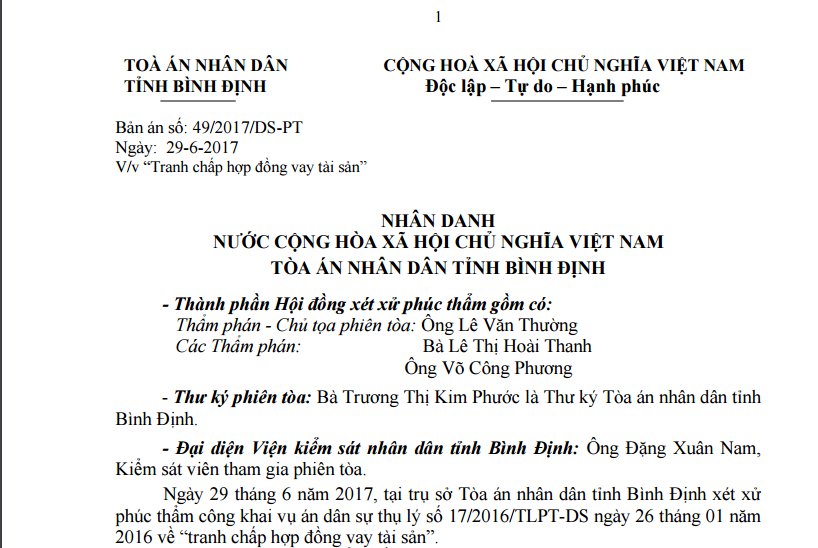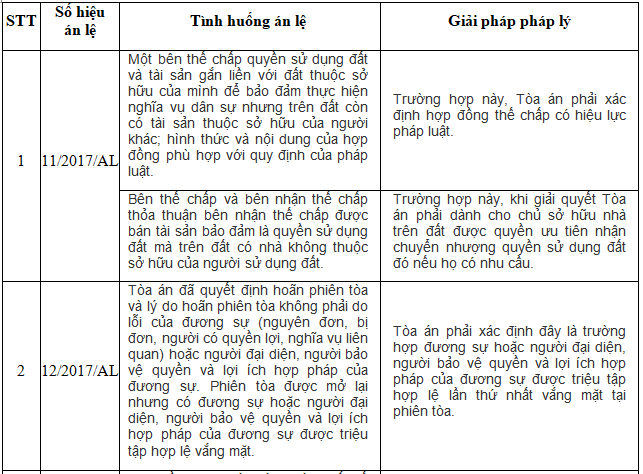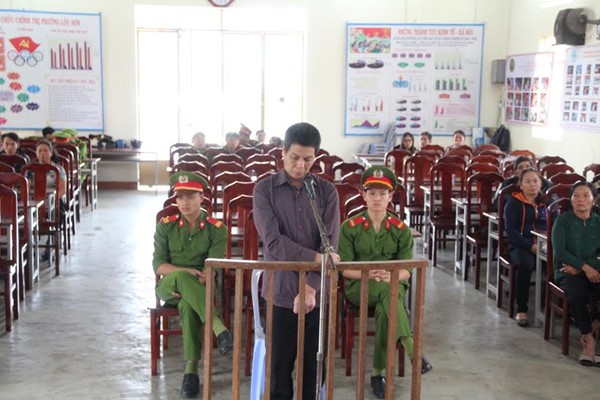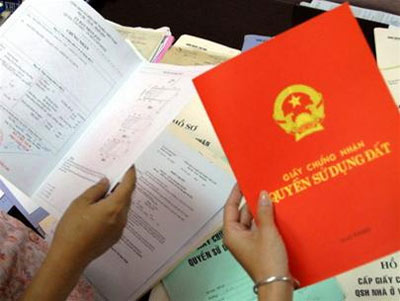On July 22, the Supreme People's Court held a seminar to collect opinions on judgments and proposed decisions to be developed into Precedent in Ho Chi Minh City. Among the judgments presented for opinion, one judgment drew attention by using DNA testing for buffaloes to resolve disputes
According to the draft of the precedent "on the efforts in care and maintenance" based on the Appellate Civil Judgment No. 06/2017/DS-PT dated April 10, 2017, of the People's Court of Ha Tinh province concerning the civil case "Dispute over ownership and other rights related to property" in Ha Tinh province. The plaintiff filed a lawsuit requesting the defendant to return to the plaintiff a stray buffalo approximately 3.5 years old. Upon receiving information that the plaintiff's buffalo was at the defendant's house, the plaintiff went to the defendant's house and confirmed that it was his buffalo, requesting its release, which the defendant did not agree to. The defendant claimed that it was his buffalo, born from a mother buffalo raised by his family, which had followed a herd of neighboring buffaloes upon reaching breeding age, and thus was taken back by him and his family. Therefore, he did not agree with the plaintiff’s assertion that the buffalo belonged to the plaintiff.
The appellate court held that the trial court failed to conduct a DNA test on the disputed buffalo, which the defendant had requested, thereby not adhering to the regulations in Article 102 of the Civil Procedure Code. Consequently, the People's Court of Ha Tinh province conducted a DNA test between the disputed buffalo and the defendant's mother buffalo. Ultimately, the buffalo in question was found not to be genetically related to the defendant's mother buffalo, and the court ordered the buffalo be returned to the plaintiff, while also requiring the plaintiff to compensate the defendant for the care and maintenance of the buffalo, amounting to approximately 10 million VND.
Below is the full content of the judgment concerning the buffalo dispute, which is used as a draft precedent:
Precedent No. /2017/AL on efforts in care and maintenance
Approved by the Council of Judges of the Supreme People's Court on [Month dd], 2017, and published according to Decision No. /QD-CA dated [Month dd], 2017, by the Chief Justice of the Supreme People's Court.
Source of the precedent:
Appellate Civil Judgment No. 06/2017/DS-PT dated April 10, 2017, of the People's Court of Ha Tinh province concerning the civil case "Dispute over ownership and other rights related to property" in Ha Tinh province between the plaintiff ND and the defendant BD; parties with related rights and obligations include NLQ 1 and NLQ 2; and witnesses include NLC 1, NLC 2, NLC 3, NLC 4, NLC 5, NLC 6, NLC 7, NLC 8, NLC 9, NLC 10.
Position of the content of the precedent:
Paragraphs 7, 8, 9, 10 of the "Findings" section of the aforementioned appellate civil judgment.
Overview of the content of the precedent:
- Precedent Situation 1:
The DNA test results of the disputed buffalo determine that one of the parties is not the lawful owner of the buffalo, and during the resolution of the dispute, no one else claimed ownership of the buffalo from the parties in the case.
- Legal Solution 1:
In this case, the court must recognize the male buffalo as the property of the remaining party.
- Precedent Situation 2:
The possessor of livestock owned by another has made efforts in caring for and maintaining the livestock over an extended period.
- Legal Solution 2:
In this case, the livestock owner must pay for the care and maintenance to the possessor of the livestock according to the average income of unskilled labor in the locality, corresponding to the duration of care and maintenance from the date the livestock was possessed to the date the trial court passed the judgment.
Relevant legal provisions concerning the precedent:
- Article 596 and Article 603 of the Civil Code 2005 (Article 576 and Article 583 of the Civil Code 2015).
Keywords of the precedent:
"DNA testing of livestock"; "Care and maintenance costs for livestock"; "Possession of livestock."
CASE CONTENT
In the petition and during the resolution of the case, the plaintiff ND stated:
ND's family has a buffalo with the following characteristics: light skin color, slightly spread-out horns, two hair whorls on the face, two whorls on the shoulders, two whorls on the hindquarters, one whorl on the upper neck, thick legs, and a prominent tail. This buffalo is the seventh born from the mother buffalo currently being raised by ND, born on September 6, 2012. After this buffalo, two more calves have been born. The buffalo has been vaccinated for the past three years. After losing the buffalo, ND searched for it and was informed by NLC 3 that around 6 to 7 o'clock on July 4, 2015 (AL), BD and his wife NLQ 2, along with some others, captured the buffalo to tie it to a tree about 300m away from ND's home. ND went to BD's house, confirmed it was his buffalo, and reported to the local authorities for resolution. The local authorities collected documents and attempted multiple conciliations without success. ND repeatedly requested the buffalo be released, with the buffalo returning to its rightful owner, but BD did not agree. Claiming that BD illegally captured and possessed the buffalo, ND filed a lawsuit in court, demanding BD return the buffalo with the aforementioned characteristics to his family.
The defendant BD stated: His family has three buffaloes (one mother and two male calves). The first calf (the disputed buffalo) was born on May 10, 2012, and is now exactly 3 years and 4 months old, having been vaccinated for three years. The second calf is just two years old. The buffalo of his family has been around for 6-7 years. The buffalo has seven whorls (two whorls on each hindquarter, two whorls on the shoulders, one whorl at the front of the neck, and two whorls on the face), two teeth that have freshly fallen out with no new growth yet, horns 30 cm long, slightly spread-out, wide and round hooves, and light skin color with three white patches (two on the neck and one under the chin) and two white spots on the left side. On August 17, 2015, the buffalo reached breeding age and followed the herd of buffaloes from the residential area I, ward K, so BD and his family retrieved it. BD asserted that it was his family's buffalo, therefore, he did not agree with ND's claim.
The party with related rights and obligations – NLQ 2, BD's wife, affirmed: The disputed male buffalo belongs to her family, so she did not agree with the plaintiff's request to return the buffalo.
The party with related rights and obligations – NLQ 1, ND's wife, claimed: She agreed with ND's statements and asserted that the disputed buffalo belonged to her family, demanding BD's family return the buffalo.
The witnesses: NLC 1, NLC 2, NLC 3, NLC 4, NLC 5, NLC 6, NLC 7, NLC 8, NLC 9, NLC 10 all provided statements in the case file, confirming the incident occurred on July 4, 2015 (AL) and requested the court to resolve the matter according to the law.
After ND reported the buffalo loss to the local authorities, the Commune People's Committee K and the ward police built a case file, gathered evidence and documents, organized multiple conciliations, and applied local customs to resolve the dispute. They requested the defendant, currently possessing the buffalo, to bring it to the police and the Commune People's Committee to follow the practice of releasing the buffalo to let it find its way home, thereby determining ownership. However, the defendant did not cooperate.
On November 3, 2015, after working with ND and BD, the trial court temporarily assigned the disputed buffalo to BD for management during the case resolution, stipulating that any loss or damage must be compensated according to regulations.
On April 11, 2016, the trial court, in cooperation with local authorities, conducted an on-site inspection and asset valuation. The result revealed: The disputed asset is a black male buffalo (grayish black, light skin color) weighing about 300 kg, around four years old, with two whorls and two white spots on either side of the eyes, two whorls on the front flanks, two whorls on the rear flanks; three white patches under the neck and head, with three white spots and a faint whorl on the left side of the neck. The buffalo was valued at 30,000,000 VND at the time of valuation.
Given the aforementioned dispute, on July 28, 2016, in the trial judgment No. 04/2016/DSST, the People's Court of district-level town Ky Anh applied Article 242, 255, 256 of the Civil Code; Clause 4, Article 18, Article 24, Clauses 1 and 2 of Article 27 of the Ordinance on Court Fees and Costs, and the list of applicable court fees, stated:
-
Accepting ND's lawsuit.
-
Ordering defendant BD to return the property, a male buffalo valued at 30,000,000 VND (Thirty million VND), currently under care, to the plaintiff ND.
In case the defendant causes any damage to the buffalo, he must compensate the plaintiff the value of the buffalo, which is 30,000,000 VND (Thirty million VND).
Additionally, the court announced the fees and the parties' right to appeal.
On August 10, 2016, the defendant appealed the entire content of the trial judgment, requesting that the disputed male buffalo be recognized as belonging to his family.
At the appellate court hearing on November 24, 2016, the defendant and his authorized representative argued that there was no basis for the plaintiff's claim that the disputed buffalo belonged to him. The trial court's failure to conduct a DNA test upon the party's request was contrary to legal provisions. They requested the appellate court to temporarily suspend the case resolution to conduct a DNA test to ensure the defendant's rights and interests. The defendant fully accepted responsibility for all costs according to the law.
After considering the defendant's request, the Appellate Hearing Panel deliberated and decided to temporarily suspend the case to conduct a DNA test on the disputed buffalo.
The representative of the People's Procuracy of Ha Tinh province, after commenting on the law compliance of the presiding judge, the Hearing Panel, the court secretary, and the involved parties, analyzed and assessed the case evidence, the trial judgment, the defendant's appeal, and recommended that the Hearing Panel apply Clause 1, Article 308 of the Civil Procedure Code 2015, reject the defendant's appeal and uphold the trial judgment of the People's Court of district-level town Ky Anh.
Based on the evidence and documents examined at the hearing, the results of the debate at the hearing, and considering the full and comprehensive evidence, the procurator's opinions, and the involved parties:
FINDINGS
Regarding procedural matters:
The trial court correctly identified this case as a dispute over livestock under Article 242 of the Civil Code and Article 26 of the Civil Procedure Code and appropriately handled jurisdiction and the dispute relation. The participation qualifications of the involved parties and the case resolution period complied with legal provisions.
However, the trial court's failure to conduct a DNA test on the disputed buffalo, as requested by the defendant, was not in accordance with Article 102 of the Civil Procedure Code.
Regarding the case’s content:
Considering the characteristics of the disputed buffalo: It is a male buffalo approximately four years old, with grayish black skin, slightly spread-out horns, two whorls on the face, two whorls on the shoulders, two whorls on the hindquarters, one whorl on the upper neck.
Based on the statements of the involved parties, both the plaintiff and the defendant confirmed that their families lost a male buffalo with the aforementioned characteristics and provided testimony to accurately identify the disputed buffalo. Therefore, relying solely on the testimony of the involved parties and witnesses to make a judgment is unconvincing and lacks precision and objectivity. During the case resolution, local authorities and the trial court proposed applying a local custom of releasing the livestock to determine ownership. This custom is often used to resolve buffalo or cow disputes to ensure objectivity, honesty, quick resolution, and decisiveness. However, this method could not be implemented due to the defendant's non-cooperation. The trial court's view that the defendant avoided fulfilling their burden of proof as required by the Civil Procedure Code has a basis.
At the appellate hearing, upon the defendant's request for a DNA test to determine the genetic relation of the disputed male buffalo, the appellate court issued a decision to conduct the test, comparing samples from the disputed buffalo and the defendant's mother buffalo, which the defendant claimed had the same genetic relationship.
Based on the decision and the test results from iDNA Genetic Company, the conclusion stated: “After analyzing the genetic test samples of the presumed mother buffalo owned by BD and the calf, the result indicates no mother-child genetic relationship. The probability of a mother-child genetic relationship is 0.00%.”
Thus, this conclusion provides a scientific, precise, and objective legal basis for determining that the disputed male buffalo and the mother buffalo owned by BD are not genetically related. This affirms that the male buffalo is not owned by BD. Therefore, BD's appeal is unfounded.
Throughout the case resolution from trial to appellate levels, the ownership dispute over the male buffalo only arose between the two families of ND and BD, with no other claimants. Consequently, by elimination, it can be determined that the male buffalo is the property of ND's family, as asserted in the trial judgment.
However, to ensure the legitimate rights and interests of both parties, the appellate court finds that BD has made efforts in caring for and maintaining the buffalo over a prolonged period. Therefore, recognizing the care and maintenance costs for BD is both reasonable and fair. Based on the confirmation of the average income for unskilled labor in ward K, district-level town L, ranging from 100,000 VND to 150,000 VND/day, a suitable care and maintenance cost for livestock would be 40,000 VND/day.
At the meeting on November 3, 2015, the trial court temporarily assigned BD the care and maintenance of the buffalo during the case resolution. This legal basis allows the appellate court to calculate the care period corresponding to the care and maintenance cost from November 31, 2015, to the trial judgment date, totaling 269 days x 40,000 VND = 10,760,000 VND. Therefore, the plaintiff must repay this cost to the defendant.
Based on the above grounds, the appellate court dismisses the appeal content of BD and partially amends the trial judgment.
The defendant's appeal is not accepted, and the civil appellate fee is borne by the defendant.
For the reasons stated;
Citing Clause 2, Article 308, and Clause 1, Article 309 of the Civil Procedure Code;DECISION:
-
Dismiss the content of BD's appeal, partially amend the content of the First Instance Judgment No. 04/2016/DSST dated July 28, 2016, of the People's Court of Kỳ Anh district-level town, Hà Tĩnh province.
-
Pursuant to Articles 242, 255, 256 of the Civil Code:
- Accept ND’s lawsuit claim.
- Require the defendant BD to return the property, a bull currently being cared for and raised by the family, valued at 30,000,000 VND (Thirty million dong) to the plaintiff ND. The characteristics of the bull as specified in the Record of Inspection, Assessment, and Valuation dated April 11, 2016.
- Require the plaintiff ND to pay the cost for caring and raising the bull from November 03, 2015, to July 28, 2016, to BD's family, amounting to 10,760,000 VND.
In case the defendant causes any damage to the bull, they must compensate the plaintiff ND an amount equal to the value of the bull, 30,000,000 VND (Thirty million dong).
From the date the judgment becomes legally effective, if any party requests judgment enforcement and either the plaintiff or defendant fails to comply with the judgment, they must also pay interest on the delayed amount at the basic interest rate announced by the State Bank, corresponding to the delay period.
If the judgment is enforced according to provisions in Article 2 of the Law on Civil Judgment Execution, the party entitled to enforcement and the party obligated to enforce have the right to negotiate enforcement, request enforcement, voluntarily execute enforcement, or be subject to coercive enforcement as stipulated in Articles 6, 7, and 9 of the Law on Civil Judgment Execution. The statute of limitations for enforcement is implemented according to the provisions in Article 30 of the Law on Civil Judgment Execution.
- Regarding court fees:
Concerning first-instance court fees: Pursuant to Clause 4, Article 18, Article 24, Clauses 1 and 2, Article 27 of the Ordinance on Court Fees and Charges and the accompanying schedule of fees: BD is required to pay 1,500,000 VND (One million five hundred thousand dong) in first-instance civil court fees. Refund ND 200,000 VND (Two hundred thousand dong) of the advance first-instance civil court fee paid to the Civil Judgment Execution Sub-Department of Kỳ Anh district-level town, per Receipt No. 0002338, dated November 02, 2015.
Concerning appellate court fees: Pursuant to Article 150 of the Civil Procedure Code and Article 29 of Resolution 326/2016/UBTVQH14 dated December 30, 2016, of the Standing Committee of the National Assembly on the rates of court fees, exemptions, reductions, collection, payment, management, and use of court fees and charges: BD is required to pay 200,000 VND of appellate civil court fees, deducted from the 200,000 VND already paid according to Receipt No. 0002378 dated August 16, 2016, at the Civil Judgment Execution Sub-Department of Kỳ Anh district-level town; ND is required to pay 530,000 VND in ad valorem civil court fees.
- Other decisions of the first-instance judgment without appeal or protest take effect according to law from the end of the appeal and protest period.
The appellate civil judgment takes effect from the date of pronouncement.
CONTENT OF THE PRECEDENT
"Thus, this expertise conclusion is the most scientifically, accurately, and objectively legal basis for the Court to determine that the bull, which is the disputed property, and the cow currently owned by BD are not blood-related. This confirms that the bull does not belong to BD. BD's appeal content has no foundation for acceptance.
During the resolution of the case from the first instance to the appellate level, the dispute over ownership of the bull arose only between the two households, ND and BD, without any other claimants. Thus, using the exclusion method, it can be determined that the bull belongs to ND's household as affirmed by the first-instance judgment.
However, to ensure the legitimate rights and interests of both parties, the appellate level acknowledges the defendant's effort in caring for and raising the bull for an extended period, so compensation for caretaking and raising the bull is justified. Based on the document confirming the income level of unskilled laborers in ward K, district-level town L, which ranges from 100,000 VND to 150,000 VND per day, it is reasonable to set the caretaking fee for raising cattle at 40,000 VND per day.
On November 03, 2015, the first-instance level temporarily assigned BD to care for and raise the bull during the case resolution period. This legal basis allows the appellate level to calculate the caretaking period corresponding to the caretaking fee for the bull from November 31, 2015, to the date of the first-instance judgment announcement, corresponding to an amount of: 269 days x 40,000 VND = 10,760,000 VND. The plaintiff is required to pay this cost to the defendant."
 Article table of contents
Article table of contents









.Medium.png)
.Medium.png)
.Medium.png)
.Medium.png)
